Heart of Dryness: Water, Climate, and Energy
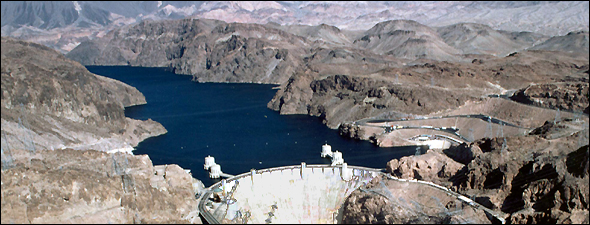
By James G. Workman
Special to Circle of Blue
Copyright 2009 Walker & Company, Excerpt from Heart of Dryness
Circle of Blue presents the second installment (read Climate Change Coping Strategies) of excerpts from James G. Workman’s Heart of Dryness in conjunction with our upcoming investigations into Water+Climate: Energy. This time around, Workman draws parallels between energy consumption in the developed world and how it intersects in remote areas like the Central Kalahari Game Reserve; the Bushmen’s home.
Qoroxloo’s people had evolved in autonomous face-to-face groups of 30-50 and even the larger, relatively isolated bands seldom grew beyond 150 members. Each found its own equilibrium and order through small-scale, non-hierarchical self-regulation. Their human nature was the same as ours. Yet internal strife, lust, avarice, jealousy and tensions were relieved and tempered from within, avoiding lawyers, courts or police enforcement. For millennia they had enjoyed the Kalahari core all to themselves without competition. But as Botswana split up their families and terminated services, Qoroxloo and others sought, for the first time, political representatives to speak and act on their behalf.
Initially Bushmen tried the legal route, as 243 Bushmen signed a paper in which human rights attorneys would represent them collectively in a class action suit against Botswana’s government. Both sides anticipated the case would be quickly dispatched; resolved in time for Bushmen to return home “before the next rainy season.” No one knew a four year and ten month mega-drought would pass before any final judgment.
In the meantime, possession remained 9/10 of the law. If Bushmen like Qoroxloo could endure the pressures and isolation to vote with their intransigent feet in the Kalahari heartland, their examples would carry immeasurable political weight in the wider world.
About that time I wandered into Botswana’s capital city, seeking interviews with the Bushmen representatives and their legal team. In desperation they saw my Land Rover, read my sympathy, and asked me to smuggle reinforcements to Qoroxloo’s band.
I hesitated, partly from journalistic detachment but mostly out of cowardice. The President’s cabinet had threatened reprisals, resenting “undue foreign intervention” and explicitly “rejected any and all outside assistance,” for Bushmen. I feared the real and not imaginary risks I might face. I was by nature an observer, and by crossing the line from note-taker to participant to join some futile resistance, I would not only lose a reporter’s impartiality, but could also be arrested, deported, or jailed and forgotten.
For decades I’d avoided getting entangled in hundreds of other worthy causes, yet this ordeal seemed different, it had a “last stand” feel to it. In the course of my interviews of evicted Bushmen outside the Reserve, more than one Bushman told me, through translators, “I only want to go back to my home in the Kalahari, live there until I die, and be buried in my ancestral land where my father was born and is buried.”
The next morning Bushmen transferred their illicit “contraband”–sacks of corn meal, sugar, stew, dried fruit, tea, tobacco, medicine, news and water–into my vehicle. We hid it beneath two weeks of dirty laundry, the stench of which should discourage any inspector.
“You sure you’re okay with this?” Ngakaeja asked.
“No one’s forcing me.”
“Have you been in the desert before?”
“No,” I replied, masking anxiety under false bravado. “But hell, I’ve got a decent map. Where am I going?”
Ngakaeja spread out the map on the hood and instructed me to drop a third of the supplies in Gugamma and two-thirds in Metsiamenong, farther to the north. We looked again at the map. It showed that there were eight settlements, including Gope, Kikao, Mothomelo, Bape, Xade, and Molapo.
“What about the people in these other settlements?” I asked.
Ngakaeja glanced up, nudged his glasses up the bridge of his nose, and then looked away. “There are no people left in those other settlements…”
On the route north four paved lanes became two, then one and a half, and then nothing but that deep, soft, miserable sand. After hours of silence, I eventually rolled past a wooden sign indicating I was near the Reserve’s southern entrance at ‘Khutse,’ which in the language of the evicted Bushmen inhabitants meant “place where you can kneel to drink.” If only it were still that easy. The state’s hydro-social contract had been irrevocably severed. Never again would Botswana provide, or even allow, the dissident Bushmen another sip of water.
As I approached the Reserve threshold I was still suffering from the delusion that the stronger and more durable civilization was the outside one surrounding the Reserve, and that it was I, the big-hearted, well-situated and self-righteous American who might somehow come to the rescue of those last, poor, helpless Bushmen….
As the reality sank in about rising thirst and falling water tables and aquatic extinction, the usual suspects — all those noisy hand-wringing liberal environmentalists — prophesized their litany of doom, right on schedule. Only this time their worry was echoed by nervous conservatives, industrial interests and development boosters, also now preaching how the end of water was nigh.
Never mind the gloomy Club of Rome; bullish corporate titans at the World Economic Forum in Davos warned us how limits to growth came from scarce fresh water. Elbowing past picket lines of wild-eyed green protesters, some otherwise astute World Bankers were confounded at how, contrary to basic economics, water use grew less efficient as water grew scarcer. Goldman Sachs, a stodgy and sober Wall Street investment bank not given to hyperbole, grew increasingly alarmed that, by doubling every 20 years, global water consumption had attained an “unsustainable” rate of growth.
Two out of every five global industries believed that the impact of a water shortage on their business would be severe or catastrophic and fewer than 17% said they were prepared for that calamity. Even innovation-driven optimists worry how California’s information technology firms require 3,400 gallons per microchip, a quarter of Silicon Valley’s dwindling dams. The high-tech panacea, desalination, is so energy-intensive that it relies on power plants which currently burn up 40% of existing freshwater supplies.
One troubling indicator is revealed by our jet stream—the horizontal conveyor belt of cold air that dips down from Canada across the U.S. and creates national weather systems. Recently scientists found that, by conservative estimates, it has been migrating northward at a minimum of 12.5 miles per decade, or 18 feet per day. As it moved up from a region, high pressure and clear skies converged in its wake, leaving the South and Southwest hotter and drier. “Look south of where you are,” said Ken Caldeira a climatologist from the Carnegie Institution, “and that’s probably a good idea of what your weather may be like in a few decades.”
Or sooner. A consensus of climate scientists agree that under current arid trends, the Colorado River will continue dropping to half its current flow, and stay there, even as the urban population that depends on it for water and energy continues to double every few decades. Of course, the West has always been dry. But now it seems droughts have gone national, hammering even formerly lush regions like the Southeast.
In 2007 the National Climatic Center recorded that six of America’s ten warmest years had occurred since 1998, rising 0.6°F for each of the last three decades. That same year the state endured the driest year in recorded history, and by November, seventeen water systems had one hundred days of water supply remaining before they reached rock bottom. Farmers hauled water by pickup while Raleigh and Durham nearly dried up after reservoir levels plunged.
As streams fell beneath historic levels, low water translated into low energy. The state’s nuclear reactors and other power plants were crippled, throttled back or temporarily shut down since the billions of gallons of needed to cool them had evaporated. In the drought zone, as millions of customers braced to pay ten times more or lose their power, the state turned in vain to Southeastern neighbors for help. Extreme drought cut Tennessee Valley Authority hydropower in half, exposed Lake Okeechobee’s bare muddy bottom, dried up $787 million of Georgia’s crops and left Atlanta—America’s fastest growing city—with 60 days of water. Under cloudless skies the nation’s biggest urban agriculture industry laid off 35,000 workers, its massive Stone Mountain Park melted 1.2 million-gallons of manufactured snow, the earth’s largest aquarium drained new exhibits, and the Coca-Cola Company ominously shut off the fountains at their corporate headquarters.
Yet our real threat from water scarcity may be less economic than political. Most uncontrollable external disasters—floods, hurricanes, wars, tsunamis, earthquakes, terrorist attacks—bring out the best in America, pull our can-do society together, and motivate us to roll up our sleeves in mass collaboration.
Drought splits us apart. It pits you against your neighbor, and your state against mine. Our country’s most experienced water managers—the men who ensure we have enough to drink—confess they don’t have a solution and, looking ahead, say our common future may resemble “an Armageddon.”
Following decades in which armies fought over oil, U.S. security analysts are proclaiming “water is the new oil.” It is in fact substantially worse. Countless energy alternatives let us move “Beyond Petroleum,” but water has no substitute. No dehydrated economy can exist. After three thirsty days you secured clean fresh water, or you died.
Or you killed.
In places like Bolivia, Kenya and Iraq the strong who controlled access to water killed the weak who increasingly sought it. Asia’s drinking water kills tens of thousands from dissolved arsenic or heavy metal while post-Green Revolution farmers kill themselves when their wells run dry. Worldwide, 1.8 million die annually from thirst, dehydration and waterborne diseases, and during the last violent century the lack of clean water killed more people than all the casualties of all the wars combined. Now our military prepares for the onset of wars fought over water itself….
I lurched up at the Central Kalahari’s entry gate and killed the engine. As it cooled, my heart beat faster and I felt my shirt peel off the seat, sticky with sweat. I began to grow anxious that the officials would keep me out, or inspect the vehicle and uncover the ‘contraband,’ perhaps leading to my arrest or deportation, or worse. I had not set out to become an amateur water smuggler, and looking back I could not explain my rash decision to sneak supplies into defiant strangers living a raw desert existence, except I felt I had no choice.
It turned out my anxiety had been somewhat misplaced. The official was not sinister or menacing, just bored. After I signed some tourist forms, paid a fee, wrote down my license plate, and lied about my intended destination, he waved me past and into the Reserve. I revved up the engine, leaned back, and breathed deep. As I shifted into first gear I laughed, imagining my most dangerous obstacle was Botswana officialdom and my worst ordeal lay behind me.
Late in the afternoon of the following day, somewhere north of the Tropic of Capricorn, my engine suddenly locked up and gravity took over. In less than a second all four wheels pressed down beneath one ton of steel, and forward motion ceased. Since the heat and fuel gauges were normal, I held my breath and tried the ignition. It rolled over and over and over and over as the electric pulse weakened each rotation until in a panicky shudder I jerked out the key and stepped out into the outdoor blast furnace.
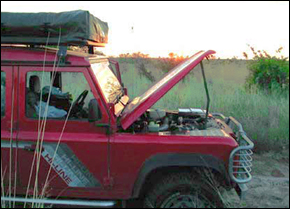
A look under the hood diagnosed the source of my predicament. The air hose had rattled loose some miles back, inhaling unfiltered dust. With each artificial breath, tiny airborne particles had mixed with gas vapor to accumulate inside until the carburetor clogged. Starved of oxygen, internal combustion suffocated and all eight pistons froze.
The vast landlocked beach yawned out in every direction and muffled my screams. But gradually, over the next few hours, this desert began to seem less hostile than merely indifferent. Animal sounds reclaimed the dead silence as an insect hum built to crescendo, songbirds chir-chir-chirred in dry leaves, and barking geckos cracked their throats. Out here was no good or evil, only thirst. All life sought moisture from tiny pockets between grains of endless sand, from the sap of plants and from blood.
Stupidly, I had been driving by myself. Worse, to avoid arrest or imprisonment I had misled the country’s federal officials about my true destination and smuggling operation. At the time I had thought my tourist ruse clever, but now no patrols would come searching, not here. Retracing my tracks on foot would be impossible, for I’d have to carry 80 pounds of water on my back. I had come too far, too fast, too deep into the Reserve, and was already sweating three pounds a day walking slowly in circles. Beyond a rationed amount my cerebral tissues would desiccate like a sponge in an oven. As the sun governed the daylight, and lions owned the dark, I lay on the vehicle roof tent anticipating a quiet, slow death here, wondering what it might feel like.
My girlfriend had for some reason given me a paperback by an adventure writer who narrated all the ways careless thrill seekers can meet their end; the last chapter, on dehydration, defined progressive stages of ‘desert thirst’ in such cheerful terms as Clamorous, Shriveled-tongue, Blood sweat, and Living death, and helpfully related the classic story of W.J. McGee’s description of a prospector caught for days in Arizona’s Gila Desert without water. McGee encountered “the wreck of Pablo,” with a weak pulse, barely alive. He was stark naked, having maniacally shed all clothing, all food, possessions, wandering in a hallucinatory state until collapsing nearly deaf and blind.
“His lips had disappeared as if amputated, leaving low edges of blackened tissue; his teeth and gums projected like those of a skinned animal, but flesh was black and dry as a hank of jerky; his nose was withered and shrunken to half its length, the nostril-lining showing black; his eyes were set in winkless stare….The mucus membrane lining mouth and throat was shriveled, cracked, and blackened, and his tongue shrunken to a mere bunch of black integument. His respiration was slow, spasmodic, and accompanied by a deep guttural moaning.’
So I had that to look forward to.
Then one night at 4 a.m. came a low, rumbling in the distance and within seconds I was off the roof, down on the ground barefoot racing diagonally toward distant headlights of the deus ex machina that was a group of well-equipped tourists headed toward wildlife pans in another direction. Armed with better tools and know-how, the white South Africans opened the valves to suck through the dust clog. The engine roared. I inhaled relief and exhaled gratitude and gave them all my wine.
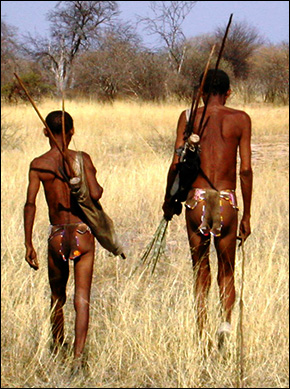
“Ag, you’re a lucky man,” one man said. “Traveling alone like this.”
“You mean stupid man. I know. I owe you more than you can imagine.”
“If you don’t mind our asking, um, what the hell brought an American out here headed off in this direction?”
I explained I was researching the causes and consequences of water scarcity, and exploring Botswana as a crucible for coming droughts worldwide.
Another squinted at me like a doctor scanning a sick patient. “You know,” he deadpanned, “there might be easier ways to find out than this.”
I nodded, attempting a broken smile.
“You ought to come follow us. Stick with our convoy.”
Their offer was tempting. Safety in numbers reduced risks, and loneliness. I could join a relaxing wildlife safari and escape back to civilization where I might laugh at my misguided recue mission, my crusade to the Bushmen, punctuated by idiocy. Only a delusional fool would politely decline.
I politely declined. But in my defense I figured it was past time to confront on its own terms that third inevitable, after death and taxes, which was heat. Rising dry heat was sucking moisture from soils everywhere. Drylands stretched across two-fifths of the planet’s surface, holding the rural third of earth’s population; the rest of us already felt the warm breath that melted away the storehouses of snow and ice, inhaled anemic rivers, and evaporated the drinking water reservoirs that supplied Sydney, Mexico City, Jerusalem, Beijing, Tehran or New Delhi. I could run away, somewhere, anywhere. But hot dry air would follow and catch up. There was, as far as scientists could see, no escape.
My desert trial alone in the wilderness brought no comforting woo-woo spiritual awakening. I remained a secular humanist with elitist prejudices. Facing a malignant tumor I’d check into the Mayo Clinic; if indicted, I’d phone a ruthless defense lawyer; and now, as my crowded planet was diagnosed with a terminally warmer future, I’d seek out the most experienced survivors of perpetual drought and water scarcity.
I waved off the kind and heroic tourists and rolled on in the opposite direction, having experienced a conversion of another sort. It dawned on me that it was no longer I who could help these Bushmen endure the hard times that had been thrust upon them, but rather they who might guide us through the coming Dry Age of our own making.
Over a few days I had but glimpsed the potential horror at the end of water, while the native people out here lived that dry existence by choice. Defying official orders, the last few bands were said to roam just the other side of the horizon. So while nervously checking that engine air hose every hour, I lurched over the maddening sands into the arid savanna where man was born and where his scruffy unwashed descendants still gave birth and teased each other and smoked and hunted and danced, and died.
More Heart of Dryness:
Climate Change Coping Strategies
Video: James G. Workman Discusses the Water and Climate Issues that Haunt Botswana’s Bushmen
Sources:
[i]Saugestad, “Improving their lives.”
[ii.] “Hydrosocial contract” coined in 1999 by Tony Turton is a notion that elegantly captures the role of water control in the formation of modern nation-states in Chapter 3, “The hydrosocial contract and its manifestation in society: A South African case study,” in Turton, (ed.) Hydropolitics in the Developing World, AWIRU, 2002.
[iii.] Peter Brabek-Letmathe, “Limits to Growth?” The World Economic Forum, January 27 2007, summary notes; Brabek-Letmathe, “The Other Inconvenient Truth,” IHT, October 7, 2008; and “A Water Warning,” Economist, The World In 2009.
[iv.] R. Maria Saleth, The Institutional Economics of Water, p. 57.
[v.] “Global Water Shortage Risk for Manufacturing,” Marsh Center for Global Risk, Sept. 6, 2007.
[vi.] “Business and Water: Running Dry,” The Economist, August 21, 2008; Peter Gleick, Desalination, with a Grain of Salt, Pacific Institute.
[vii.] Seth Borenstein, “Jet stream moving slowly northward,” Associated Press, April 18, 2008.
[viii.] Robert Kunzig, “Drying of the West,” National Geographic, Feb 2008, p 97
[ix.] Tom Englehardt, “America’s Water War,” Salon.com, November 19, 2007.
[x.] Porcha Johnson, “Experts to offer tips for drought relief,” Raleigh News & Observer, January 23, 2008.
[xi.] John Fuquay, “State prepares for prolonged drought,” Raleigh News & Observer, January 23, 2008.
[xii.] “Drought could force nuclear shutdowns: Nuclear plants could have to shut down or scale back due to drought,” Associated Press, Jan 23, 2008.
[xiii.] Jenny Jarvie, “A Parched Southeast Urges Self-Restraint,” Los Angeles Times, October 7, 2007.
[xiv.] Shaila Dewan and Brenda Goodman, “A Slow-Motion Response to Drought in US South: Last-ditch efforts belie a history of inaction,” International Herald Tribune, October 24, 2007.
[xv.] Jon Gertner, “The Future Is Drying Up,” New York Times Magazine, October 21, 2007.
[xvi.] William Finnegan, “Leasing the Rain,” New Yorker, April 8, 2002; Meera Selva “Death toll rises as Kenyan tribes battle over water,” London Independent, February 7, 2006; Christopher Reed, “Iraq: Paradise Lost?” Harvard Magazine, January 2005; “Marshes of Southern Iraq: One Third of Paradise,” The Economist, February 26, 2005; Edward Wong, “Marshes a Vengeful Hussein Drained Stir Again,” New York Times, Feb. 21, 2004. “Resurrecting Eden,” National Wildlife, Feb. 2004.
[xvii.] Jacques Leslie, “Running Dry: What happens when the world runs out of fresh water?” Harpers, August 2000.
[xviii.] UNDP Report, Beyond scarcity, Executive Summary, 2006
[xix.] Peter Schwartz & Doug Randall, An Abrupt Climate Change Scenario and its Implications for US National Security, Briefing report commissioned by Andrew Marshall, Pentagon, October 2003.
[xx.] Peter Stark, Last Breath, 2001, p. 253
[xxi.] W.J. McGee, “Desert Thirst as Disease,” originally published in the Interstate Medical Journal 13, 1906; also as quoted in Thirst: Physiology of the Urge to Drink and Problems of Water Lack, by A.V. Wolfe, Springfield: Charles C. Thomas, 1958.

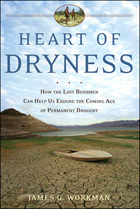
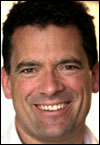
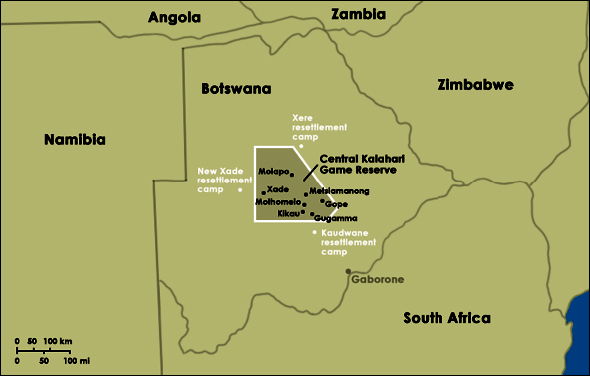
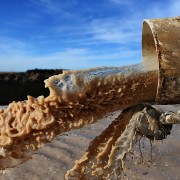
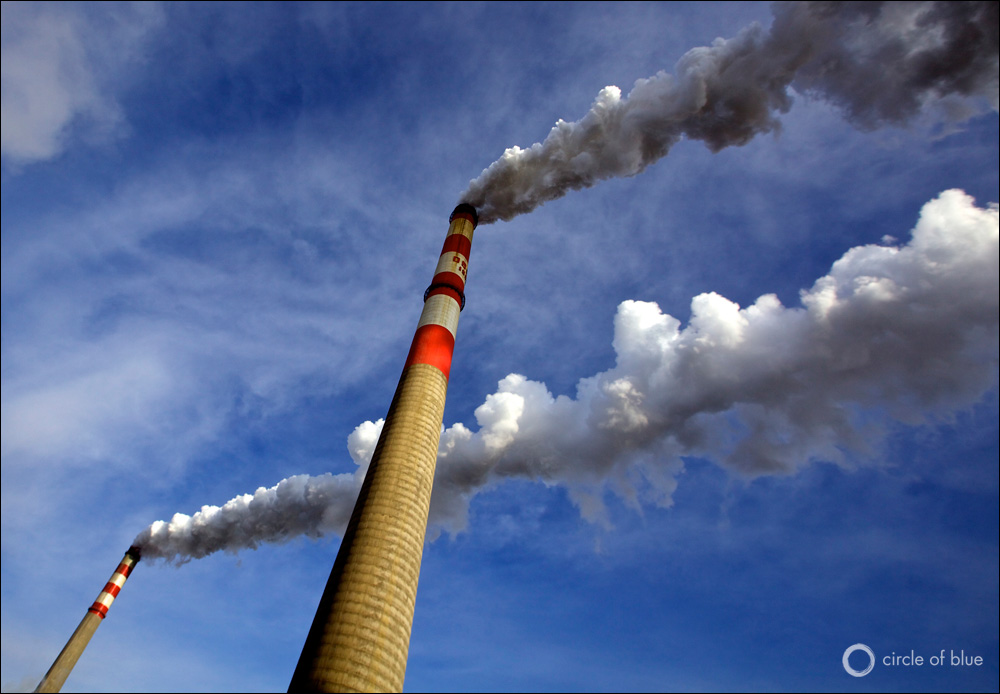


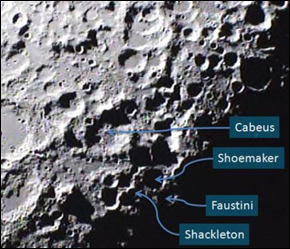
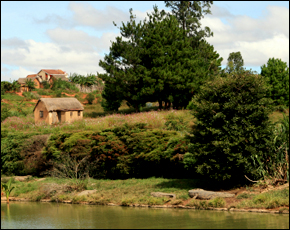
Leave a Reply
Want to join the discussion?Feel free to contribute!